Here is the ranking of some richest countries (and two territories) in the world, using their GDP per capita in international dollar values, a unit of measurement that allows for a comparable understanding of the wealth value in countries with different currencies.
1. Luxembourg
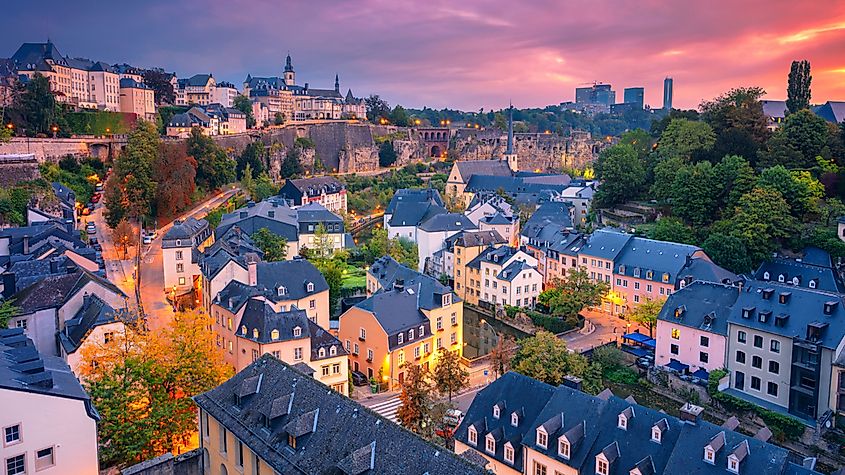
- Population: 629,191
- GDP per capita: Int$ 118,359.5
Known for high-income levels and a low unemployment rate, Luxemburg is the richest country in the world. With its inflation rate at only 1.1%, its wealth is also extremely stable. According to the World Economic Forum, the major factor for Luxembourg’s high GDP is the large number of people working in this tiny, landlocked nation, while residing in the neighbouring western European countries. The advanced infrastructure and high values for the labor market attract investment and duplicates of the big outside firms.
Having depended on the steel and iron industry for a long time until it stopped bringing profit in the 1970s, the nation adapted superbly. Today, as one of the most educated labor forces in the world, Luxembourg prospers from a mix of industries, predominantly and an import-export economy based on financial services. Small to medium-sized companies expanded, while a highly-skilled labor force with an ability to speak multiple languages is highly demanded by multinational corporations. There is also a small but prosperous agricultural sector in the country.
2. Singapore
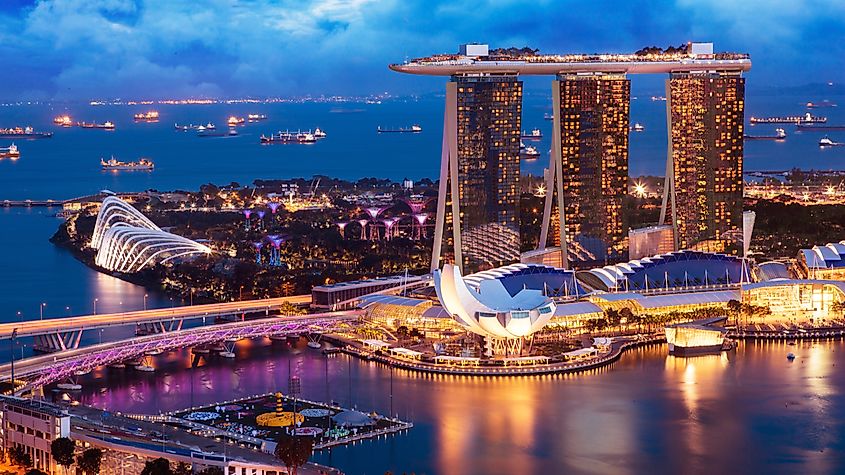
- Population: 5,866,407
- GDP per capita: Int$ 98,526.0
Having no natural resources to build its economy on has not stopped the hard-working and inventive Singaporeans from turning their country into the second-richest in the world. Being a major world hub for global financial services firms drives the economy. The jobs in manufacturing, services, transport engineering, and logistics pay its citizens well, while electronics, biotechnology and chemicals are the main exports of the country.
By erecting high-end infrastructure and significantly expanding its tourism sector, Singapore attracts millions of tourists on a yearly basis. On top of that, the government procured a very investor-friendly economic environment of free trade, open market, and attractively-low tax rates, sought after by international firms and business travellers.
3. Ireland
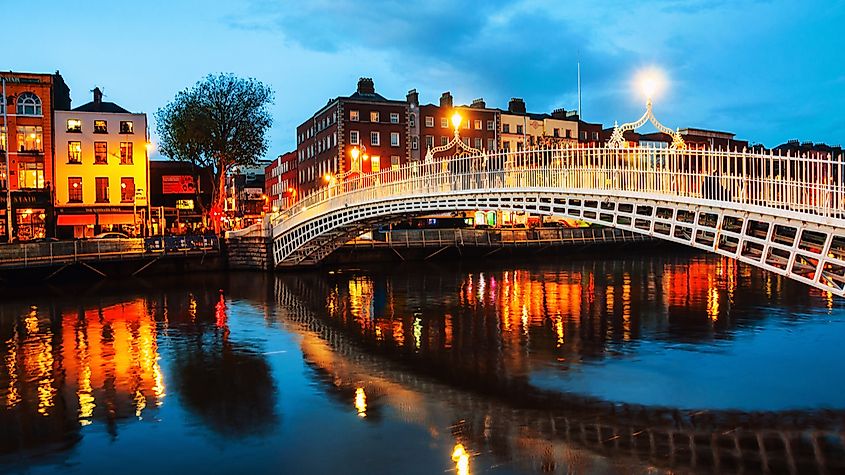
- Population: 4,953,494
- GDP per capita: Int$ 93,612.2
Low corporate taxes continuously attract numerous multi-billion dollar companies to relocate and grow their business in Ireland, contributing to the GDP, and the high standard of living for the people. Although citizens receive high wages, the income per capita has been growing at a much slower rate than the collective GDP. Nevertheless, the country’s stability and ongoing wealth gain from tourism, agriculture and manufacturing, is coveted by others.
The country’s main exports comprise metals and food products, including brewing, computers, their parts and software, and textiles. Ireland is also largely dependent on its tertiary industry, including call centers, legal services, accounting, customer service, stockbroking, and catering.
4. Qatar
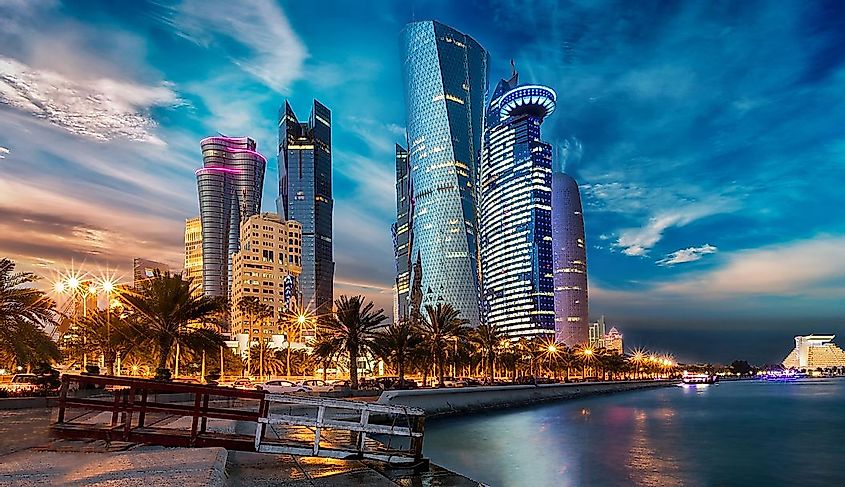
- Population: 2,899,617
- GDP per capita: Int$ 89,948.6
With only a small fishing industry and almost no schools just fifty years ago, the once-sleeping peninsula off Saudi Arabia’s eastern coast has turned into a major oil-exporting world center in the last two decades. Qatar first began massive exports of natural in 1997 to Japan and Spain, expanding to other countries in the early 2000s. Fifteen years and 14 natural gas plants later, its GDP has grown exponentially from $30 billion to well over $200 billion USD. Today, Qatar has the largest natural gas reserves in the world following Russia and Iran, at nearly 900 trillion cubic feet, earning 60% of its collective GDP.
Having discovered oil in 1939 and natural gas 30 years later, it began producing 46,500 barrels per day in 1951. Although some of the revenue was used to start modernizing the country, much of it was being accumulated by the Royal Family, with shares also going to Great Britain, its ruling country. After gaining independence in 1971, Khalifa bin Hamad deposed his father and increased spending on social programs, housing, health, education and pensions, cutting the Royal Family’s allowances. The country also receives major returns on investments in foreign brands, banks, and even the Paris Saint-Germain soccer team and real estate in London.
5. Switzerland
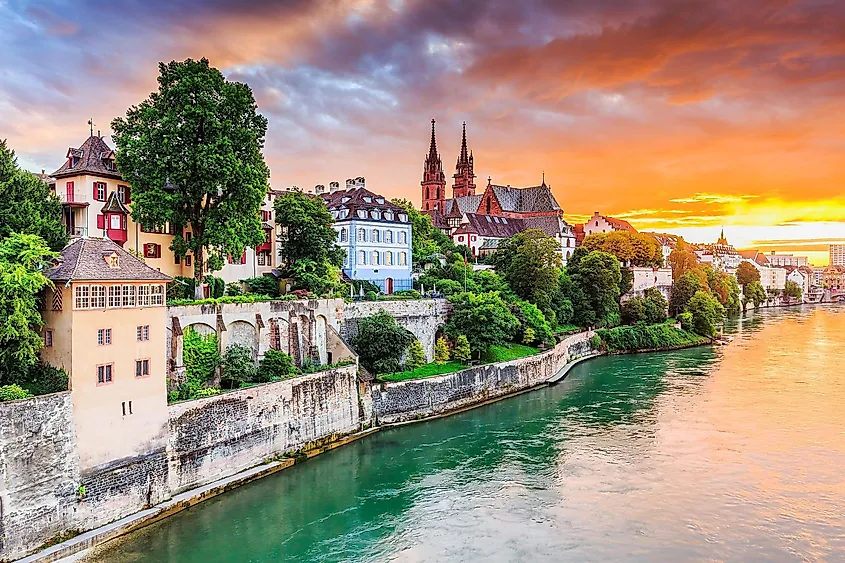
- Population: 8,675,923
- GDP per capita: Int$ 71,352.4
Considered one of the happiest and healthiest nations on Earth, Switzerland is home to German-, French- and Italian-speaking citizens, living peacefully and thriving together for over 800 years. Even with its high cost of living, expensive products and services, as well as the Swiss Frank’s extremely high value with a high conversion rate to other currencies, people stream to engage with this country though business or tourism. A stable economy with a fixed currency value, Switzerland is regarded highly by investors in search of a safe haven for highly profitable feats. Attractive tax rates bring in investment, while international companies seek to expand their business to Switzerland.
The Swiss are an innovative bunch, craftily turning natural resources into quality goods such as their highly-demanded chocolate, cheese, jewellery, home decor and furniture. Exports contribute the most to the GDP, with gems and precious metals bringing nearly $100 billion a year, followed by pharmaceuticals and machinery. The mountains, the charm of its cities and the luxurious lifestyle call out to millions of tourists every year, while the highly developed tourism sector does not frighten off with its high prices. With no capital gains tax, a low value-added tax on its products at 7.7%, and lower than average income taxes, the Swiss also enjoy investing in their own economy, preferring to buy local, paying for garbage disposal and their inexcusably expensive bottles of water.
6. United Arab Emirates
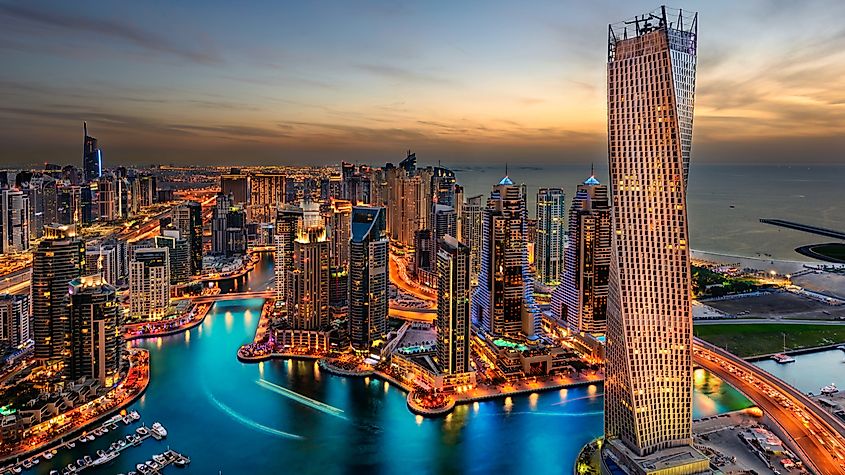
- Population: 9,926,221
- GDP per capita: Int$ 69,957.6
Back when it was known as the Trucial States, the pearl industry prevailed in this country from the 1770s until the late 1930s, when pearl-diving was a hobby turned into a major source of income for the people living in the small villages. Now, having been able to establish some of the most luxurious resorts in the world, Dubai along with the rest of the country has moved on to tourism, which keeps investing in itself through ongoing growth and popularity.
The discovery of oil in the late 1950s caused a clash between the citizens of Dubai and Abu Dhabi, with the latter getting the upper hand over the oil boundaries and becoming richer, while the former struggled. While Abu Dhabi thrived, the ruler of Dubai, Sheikh Rashid bin Saeed Al Maktoum, did not lose hope in his state’s potential, loaning tens of billions of dollars to invest in the state’s infrastructure in 1958, completing its first airport by 1960.
7. Brunei
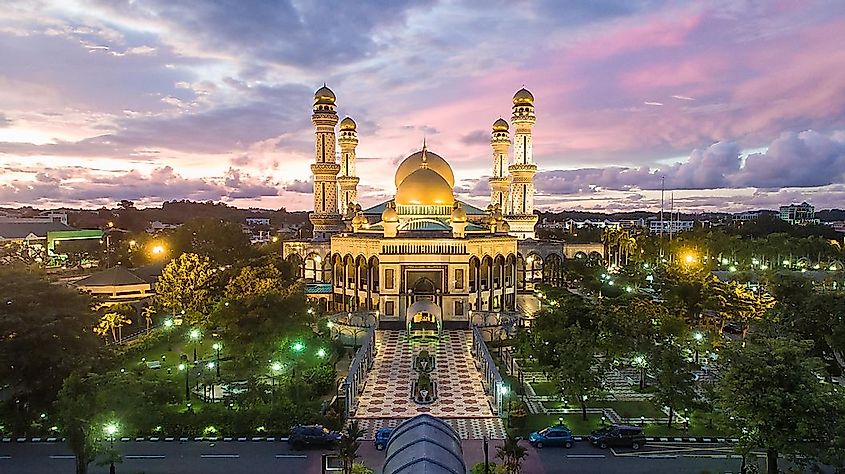
- Population: 438,788
- GDP per capita: Int$ 65,661.7
Having gained independence from Britain in 1984, the small country of Brunei situated in South Asia, quickly grew to become one of the richest countries in the world. Its Sultan regulates everything from the military to the economy, imposing unique punishing rules but also providing free education and medical care for its citizens. Brunei has an over 97% literacy rate.
Brunei is known as the second happiest nation on the continent behind Singapore, which may be surprising, seeing as the wealth of the country is not equally distributed, with much of the population living in poverty. Nevertheless, while the US’s public debt in 2018 was 106% of its GDP, it was only 2.4% in Brunei.
What has made Brunei so rich is its offshore oil drilling industry, bringing the economy riches from export. It is well known that there are people in Brunei who enjoy luxurious things in life, with more car ownership than in most countries in the world. Despite the strict rules on certain things like homosexuality and alcohol consumption, prostitution often goes “unnoticed,” and even the Sultan has had numerous scandal features written about him for being a “sex-obsessed monarch.”
8. United States
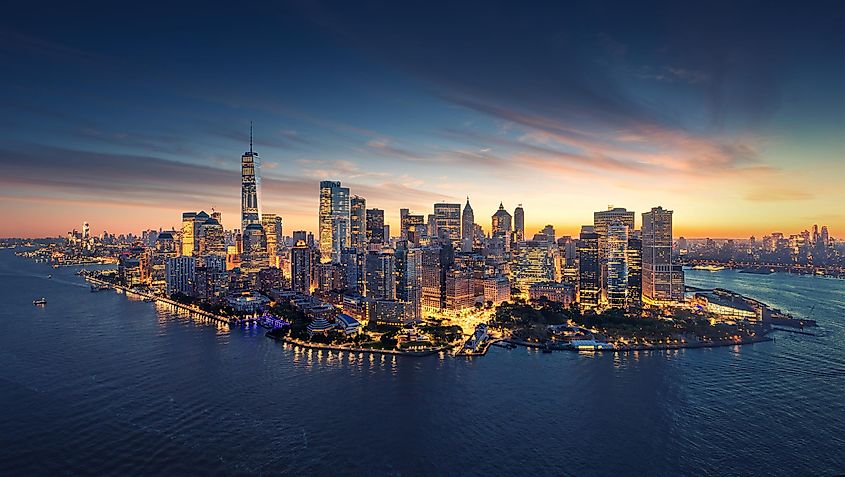
- Population: 331,643,466
- GDP per capita: Int$ 63,543.6
With resource-rich land and the biggest economy in the world, the United States has a strong purchasing power. It supplies its own energy and is able to export its own oil and gas for profit, and the size of its economy and the high rate of real GDP growth go unmatched by any other country. As a relatively deregulated market economy with a decentralized political system, there are virtually no state-owned enterprises, while the legal system protects liability of investors. Although such stats attract talented people from around the world to take a shot at earning a fortune, it remains one of the top countries where wealth is not shared equally.
America has an entrepreneurial mindset that is encouraged from an early age and supported by university programs as well as research institutions. There is also a developed financial system in place, of equity finance and decentralized banking system that supports entrepreneurial activities. Nevertheless, public debt is currently $27,000 billion, which is also $3,000 billion higher than pre-COVID-19.
9. San Marino
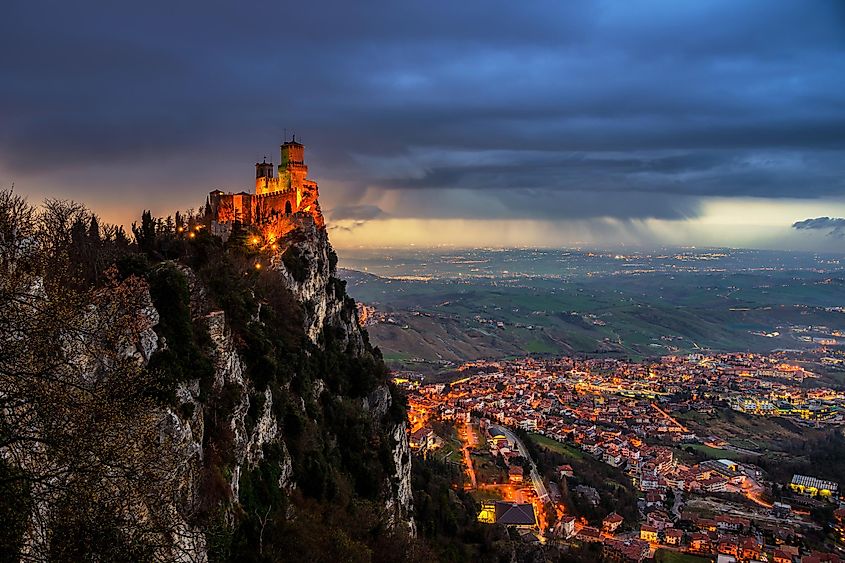
- GDP per capita: Int$ 63,420.3
The stable and prosperous economy of San Marino is partly owed to its resourceful citizens who were able to successfully adapt and utilize their available resources. Traditionally, San Marino was a country of farmers and stone-quarrellers, producing cheeses and agricultural products, along with unique trinkets made out of stone. Today its hard-working citizens contribute to the economy by producing ceramics, tiles, building materials, furniture, clothing, fabrics, paints, quality spirits and wines, for export. The export of fruit has also been a factor in the nation’s recent economic growth.
Completely enclosed by Italy, San Marino still retains a close relationship with the country it was formerly a part of, including payments made by the Italian government for monopolies on tobacco and other commodities on this South European microstate. San Marino’s bank system is also closely integrated in the EU’s through the Italian economy: its monetary and customs systems. While the cost of living in San Marino is comparable to Italy, the even distribution of wealth in this socialist society has led to one of the lowest poverty rates in the world. Lastly, with its low local population count and close to 3.5 million travellers a year, more than half of the country’s GDP owes to tourism.
10. Norway
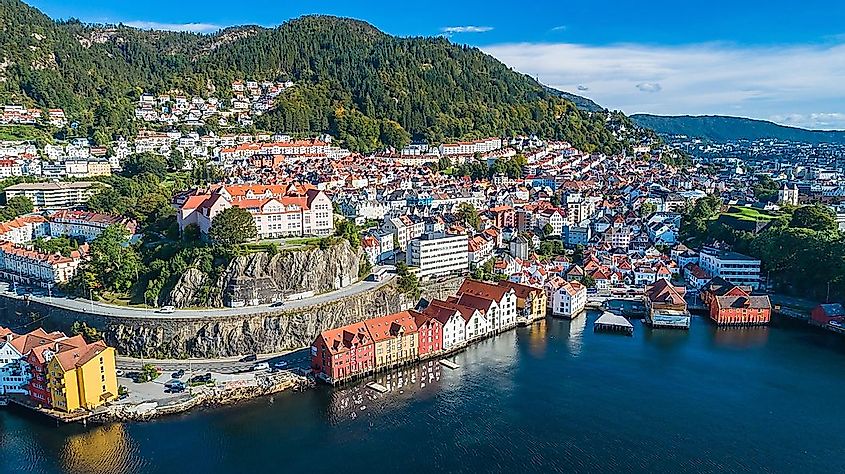
- Population: 5,435,878
- GDP per capita: Int$ 63,198.0
Although the seventh-richest country on this list if we omit territories, Norway is known to have the highest standard of living on Earth, as well as rank top on the human development index with its advanced education systems, distinct social security system, and universal health care. Its raw oil and gas resources exports lead the economy, while abundant reserves guarantee future prosperity, including seafood, hydro-power, lumber, minerals, natural gas, and freshwater. Petroleum is another export that has been bringing Norway riches since the 1970s.
The government invests in free education for its citizens, while parents make sure that kids learn the importance of productivity from an early age in school. Keeping busy with work is a cultural staple in Norway, without which citizens do not find joy in life. The main occupancies include telecommunications and technologies. Featuring low unemployment and poverty rates at 3 and 0.5%, respectively, it is no wonder that Norway’s standard of living is strived for by other nations. Although things cost a lot in Norway, Norwegians don’t mind investing back into their economy, while having high purchasing power through high wages enables them to spend extravagantly abroad.





0 Comments